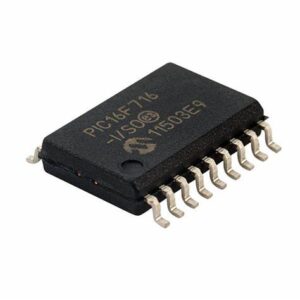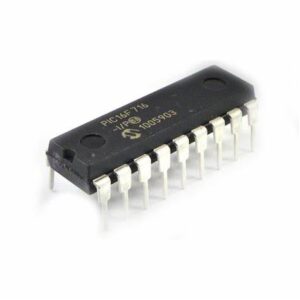Crack Microchip Locked PIC16F716 Processor Memory and restore embedded heximal file from pic16f716 mcu flash memory, dump binary firmware to new microcontroller pic16f716 microprocessor, reverse engineering pcb board with mcu pic16f716 on it;

Crack Microchip Locked PIC16F716 Processor Memory and restore embedded heximal file from pic16f716 mcu flash memory, dump binary firmware to new microcontroller pic16f716 microprocessor, reverse engineering pcb board with mcu pic16f716 on it;
Layout suggestions are shown in Figure 2-5. In-line packages may be handled with a single-sided layout that completely encompasses the oscillator pins. With fine-pitch packages, it is not always possible to completely surround the pins and components. A suitable solution is to tie the broken guard sections to a mirrored ground layer. In all cases, the guard trace(s) must be returned to ground.
In planning the application’s routing and I/O assignments, ensure that adjacent port pins, and other signals in close proximity to the oscillator, are benign (i.e., free of high frequencies, short rise and fall times and other similar noise).
For additional information and design guidance on oscillator circuits, please refer to these Microchip Application Notes, available at the corporate website (www.microchip.com):
- AN943, “Practical PICmicro® Oscillator Analysis and Design”
- AN949, “Making Your Oscillator Work”
- AN1798, “Crystal Selection for Low-Power Secondary Oscillator”
Unused I/O pins should be configured as outputs and driven to a logic low state. Alternatively, connect a 1 kΩ to 10 kΩ resistor to VSS on unused pins. This data sheet summarizes the features of this group of PIC24F devices. It is not intended to be a comprehensive reference source. For more information on the CPU, refer to “CPU with Extended Data Space (EDS)” (www.microchip.com/DS39732) in the“dsPIC33/PIC24 Family Reference Manual”. The information in this data sheet supersedes the information in the FRM.

взломать микрочип, заблокировавший память процессора PIC16F716 и восстановить встроенный шестнадцатеричный файл из флэш-памяти микроконтроллера PIC16F716, выгрузить двоичную прошивку на новый микропроцессор микроконтроллера PIC16F716, реконструировать печатную плату с MCU PIC16F716 на ней;
The PIC24F CPU has a 16-bit (data) modified Harvard architecture with an enhanced instruction set and a 24-bit instruction word with a variable length opcode field. The Program Counter (PC) is 23 bits wide and addresses up to 4M instructions of user program memory space WHICH are quite commonly used in the automotive electronic circuit board reverse engineering. A single-cycle instruction prefetch mechanism is used to help maintain throughput and provides predictable execution. All instructions execute in a single cycle, with the exception of instructions that change the program flow, the double-word move (MOV.D) instruction and the table instructions.
Overhead-free program loop constructs are supported using the REPEAT instructions, which are interruptible at any point.






